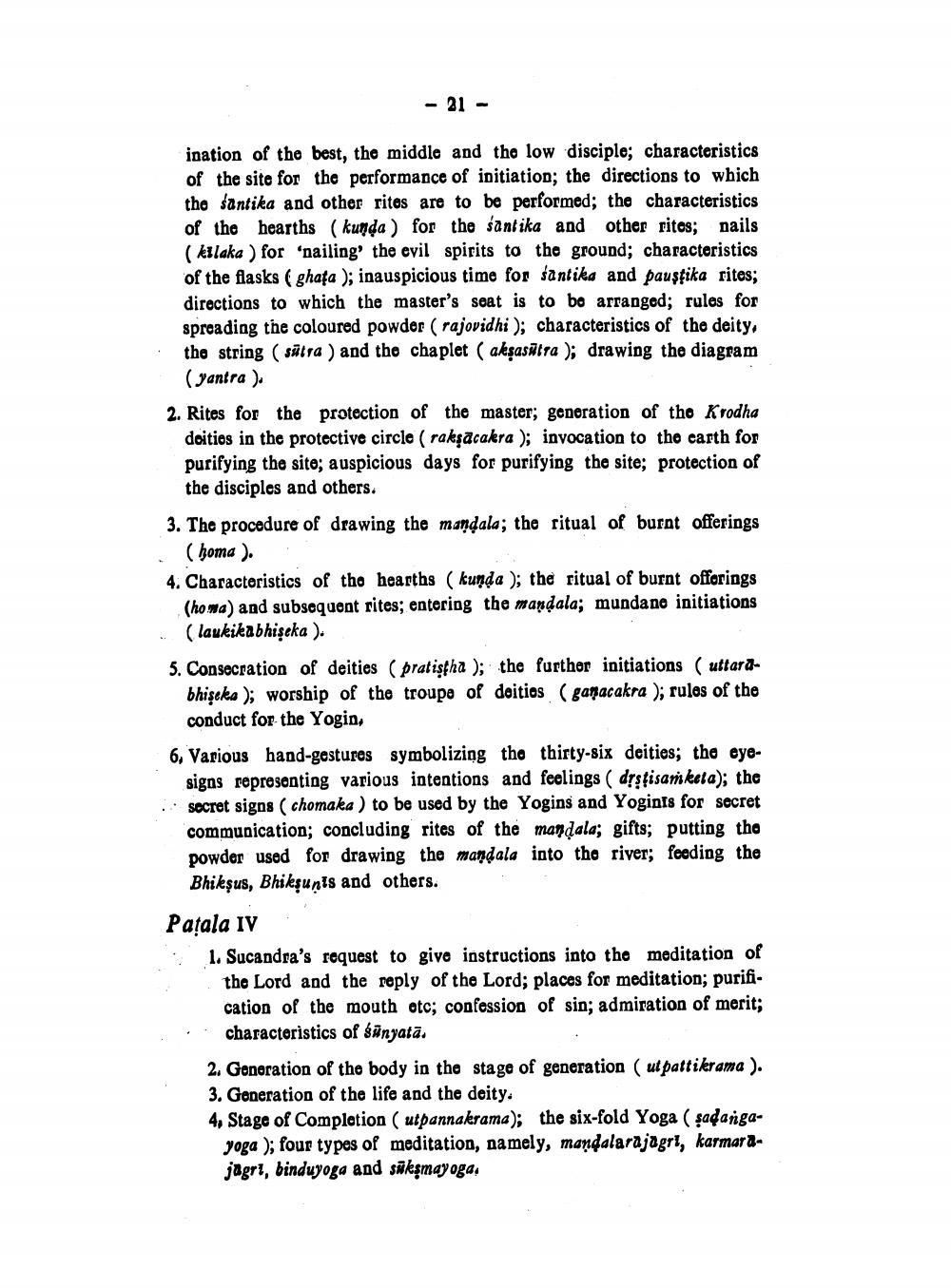________________ - 21 - ination of the best, the middle and the low disciple; characteristics of the site for the performance of initiation; the directions to which the santika and other ritos are to be performed; the characteristics of the hearths ( kunda) for the Santika and other ritos; nails ( kilaka ) for 'nailing' the evil spirits to the ground; characteristics of the flasks ( ghata ); inauspicious time for santika and paustika rites; directions to which the master's seat is to be arranged; rules for spreading the coloured powder ( rajovidhi); characteristics of the deity, the string ( sutra ) and the chaplet ( aksasutra ); drawing the diagram (yantra ). 2. Rites for the protection of the master; generation of tho Krodha doitios in the protective circle ( raksacakra ); invocation to the earth for purifying the site; auspicious days for purifying the site; protection of the disciples and others. 3. The procedure of drawing the mandala; the ritual of burnt offerings ( homa ). 4. Characteristics of the hearths ( kunda ); the ritual of burnt offerings (homa) and subsequent rites; entering the mandala; mundano initiations (laukikabhiseka ). 5. Consecration of deities ( pratisfha ); the further initiations ( uttard bhiseks ); worship of the troupe of deitios (ganacakra ); rules of the conduct for the Yogin, 6. Various hand-gestures symbolizing the thirty-six deities; the eye signs representing various intentions and feelings ( drstisanketa); the : secret signs (chomaka ) to be used by the Yogins and Yoginis for secret communication; concluding rites of the mandala; gifts; putting the powder used for drawing the mandala into the river; feeding the Bhiksus, Bhiksunts and others. Patala IV 1. Sucandra's request to give instructions into the meditation of the Lord and the reply of the Lord; places for meditation; purification of the mouth etc; confession of sin; admiration of merit; characteristics of shnyata. 2. Generation of the body in the stage of generation ( ut pattikrama ). 3. Generation of the life and the deity. 4. Stage of Completion (utpannakrama); the six-fold Yoga (sadanga yoga ); four types of meditation, namely, mandalarajagri, karmarajagri, binduyoga and suksmayoga




